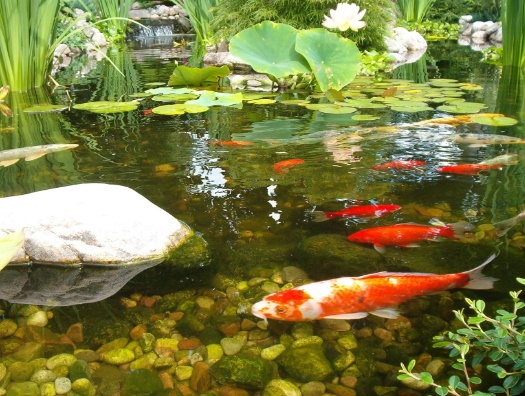 Although general mixed communities remain the most popular freshwater aquaria, many fishkeepers are drawn to certain themes. African cichlids are perhaps the best-known “niche” within the aquarium hobby, but there are many others, and recently we’ve been expanding our selection to help you explore different kinds of fish communities. Here are a few directions you might try.
Although general mixed communities remain the most popular freshwater aquaria, many fishkeepers are drawn to certain themes. African cichlids are perhaps the best-known “niche” within the aquarium hobby, but there are many others, and recently we’ve been expanding our selection to help you explore different kinds of fish communities. Here are a few directions you might try.
1. PEACEFUL CICHLIDS
Yes, you read that right. These cichlids get along with most community fish – platies, tetras, gouramies, angels (which are also cichlids), catfish and such. They still should not go with helpless things like goldfish or bettas, and you must remember that fish don’t read fish books, so they don’t always act as is typical for their species. Many of these top out at around 4 inches, making them suitable centerpiece fish for 29 gallon tanks. They are fun because they show the intelligence, personality, territorial displays and parental care of cichlids without all the bloodshed.
Keyhole cichlids, blue acaras, and orange chromides all fit this description. Larger fish (55 gal +) but still on the peaceful end can include chocolate cichlids, jurupari and other geophagus types, and festivums. Slightly pushier but still considered “community” cichlids are severums, firemouths, uarus and blood parrots. Going smaller, dwarf cichlids that are normally OK with community fish can include rams, kribensis, thomasi and apistogrammas. Some of these fish prefer planted tanks, while others will uproot plants; ask us about planting and landscaping for the species you choose.
2. MICRO FISH
The “edge” tanks, picotopes and other desktop systems have opened up a niche for fish that stay under 1 inch. The scarlet badis has been very popular, as have the various algae eating shrimp. We’re adding other fish that will fit those communities including various micro-rasboras and small tetras, featherfin rainbowfish, jewel glassfish, killifish, freshwater gobies, pygmy cories and tiny gourami and betta species. Some of these are sturdy beginner fish, while others ae a bit delicate and require some special attention to food or water chemistry. Other familiar fish will also fit here – guppies, neons or cardinals, harlequin rasboras. Watch out for dwarf frogs; they will go with some of these but their mouths are bigger than you think!
Many of these fish will require a heater; if your micro tank does not have one, we have heaters that are the perfect size. Good plants for these setups include Anubias nana, banana plants, and almost any plant with “dwarf” in its name.
3. BRACKISH AQUARIUMS
Where the river meets the sea you’ll find a unique environment. In estuaries and coastal marshes the water is not fresh or salt, it’s a mixture that varies with the tides. This unique environment has produced fish that are found nowhere else. Archer fish that spit water at flying insects, puffers that inflate when frightened, even mudskippers that climb out of the water are all brackish fish. Some familiar freshwater fish do very well in brackish tanks, including mollies and other livebearers. Most freshwater families have one or more brackish or brackish-tolerant species; there is a brackish cichlid, a rainbowfish, a catfish and a gourami.
Brackish water fish tend to be very resilient; as long as their water has a bit of salt in it, they are easy to keep. Some are fussy about their food; you’ll probably need frozen foods to keep them happy. Some (puffers, scats, monos, archers, tigerfish) are active and competitive, others (glassfish, gobies, halfbeaks, mollies) are more peaceful. If you like hearing people say “Wow, I’ve never seen that before!”, a brackish tank may be right for you.
